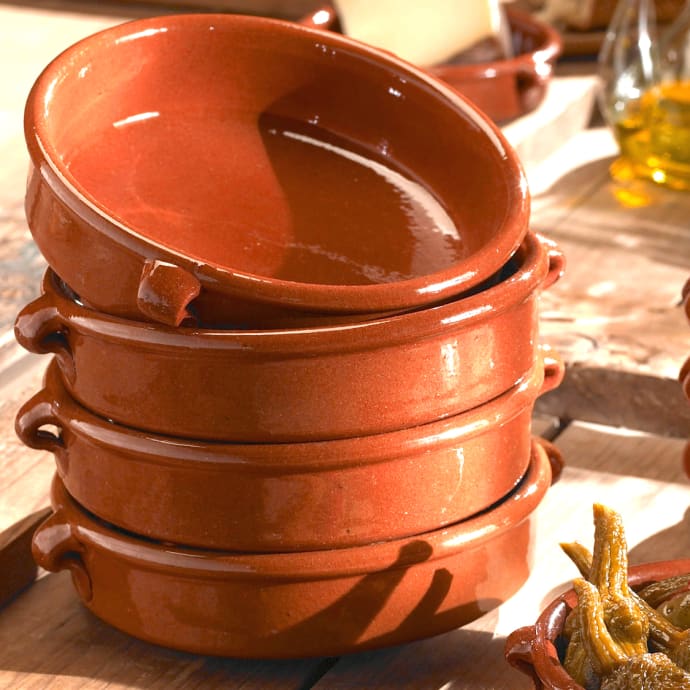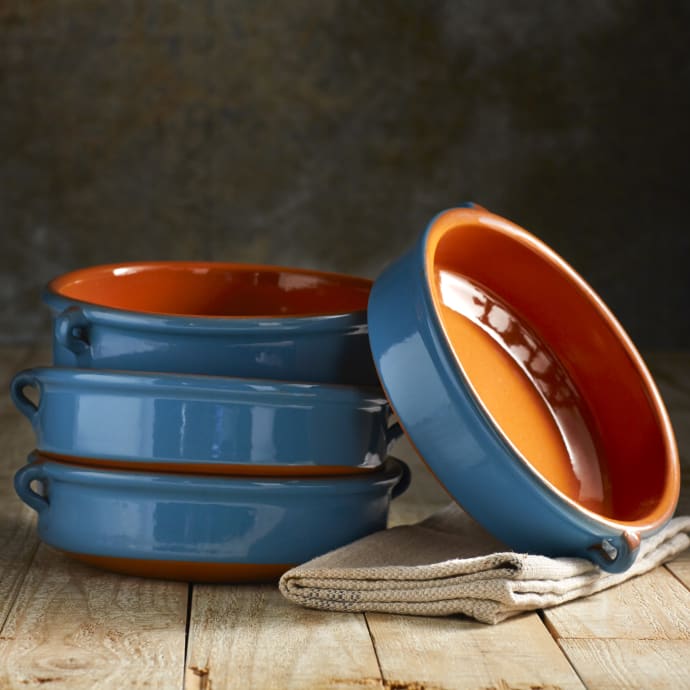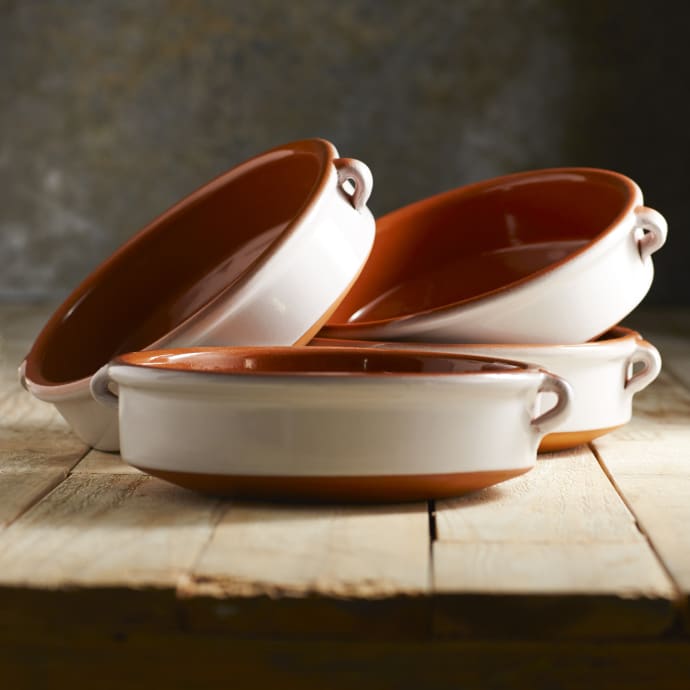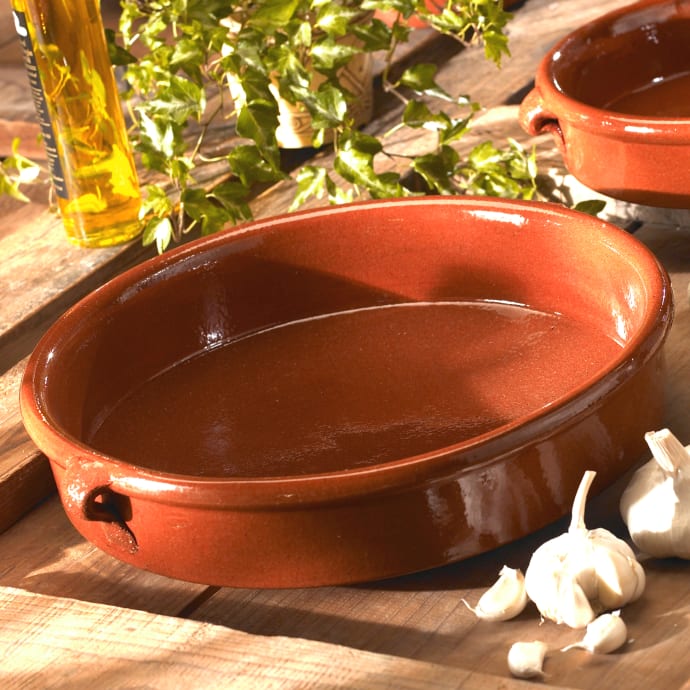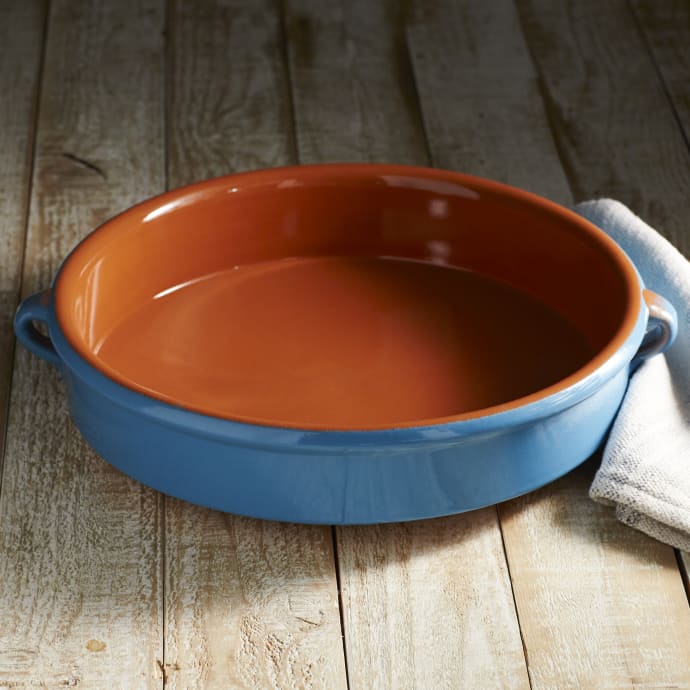Get to know the rustic, deeply flavored stews of Catalonia.
Jeff Koehler
Nearly 20 years ago, not long after I moved to Catalonia, the region in northeastern Spain of which Barcelona is the capital, my soon-to-be mother-in-law gave me my first cassola. Also known by its Spanish name, cazuela, this shallow, round, kiln-fired terra-cotta casserole is the workhorse of the traditional Catalan kitchen, where it’s used to stew and braise meats, poultry, and seafood, and even to make rice dishes. Then, when the dish is ready, the cassola is carried to the dining table, where it serves double-duty as an attractive serving vessel. Already a deep ruddy color and veined with a patina of hairline cracks when it was given to me, that first cassola lasted me for years as I learned to cook a repertoire of Catalan classics in it.
Dishes cooked a la cassola often follow a similar formula
First, the main ingredient—whether meat or seafood—is browned in the cassola and then transferred to a platter. Next, a sofregit (sofrito in Spanish) is prepared. This slow-cooked onion and tomato base is the foundation of countless dishes and a hallmark of the Catalan kitchen. Cooking the sofregit is never rushed—the flavors must be allowed to deepen and sweeten and the texture to become soft and pulpy. As my mother-inlaw told me long ago when I tried to hurry along a late lunch, “A quick sofregit does not exist.”
The meat or seafood is then returned to the cassola along with a splash of wine—crisp white for a tangy, mineral touch, muscatel or even brandy for earthier tones. Stock is ladled in, the heat is turned to low, and the dish is left to braise slowly. This, in Catalan, is called xup-xup (pronounced “choop-choop”), for the sound of the bubbles just popping through the surface of the sauce as it reduces.
Whereas the sofregit leads, a picada often finishes. Ten minutes or so before the dish is done, a handful of almonds, a clove of garlic, some parsley, and perhaps a small piece of day-old bread are pounded with a mortar and pestle into a ne paste and stirred into the stew. This mixture—the picada—thickens the sauce and draws the flavors together, giving the dish body and boldness, along with a rustic hue. So distinctive is the way of cooking in a cassola that it often lends its name to the dish: conill a la cassola (rabbit), costilles a la cassola (pork ribs), arròs a la cassola (rice).
These are family dishes, Sunday dishes, dishes to linger over.
Flavors might be few, but they are concentrated, and the last of the sauce gets shamelessly mopped up with bread from the cassola sitting in the middle of the table. But just as important is the element of gathering others around that table. The comfort that the dish brings is the ultimate goal of cooking a la cassola.
Caring for your Cassola
Traditional cassolas are glazed terra-cotta, though some cooks prefer more modern heavy cast-aluminum or cast-iron ones that distribute and retain heat just as well for simmering and braising but are much less fragile. Cassolas come in a variety of sizes, the most common being 30 cm (about 12-1/2 inches). When shopping for a cassola anywhere outside of Catalonia, you’ll most likely see it called by its Spanish name, cazuela.
Seasoning
Before using a traditional earthenware cassola for the first time, you may need to season it, which typically involves soaking it overnight in water and then allowing it to fully air-dry. Be sure to follow the manufacturer’s instructions for this step.
Cooking
An earthenware cassola shouldn’t be used over heat higher than medium high. Some manufacturers suggest using a heat diffuser to further protect the cassola and help it cook foods more evenly. Never set a hot cassola down on a cold surface or place a cold cassola—i.e., one that was refrigerated with leftovers—on a hot surface. Small cracks may appear with use and won’t affect the cassola’s performance, but deep cracks mean that it’s time for a new one.
Cleaning and Storing
Let your cassola cool completely before hand-washing in warm, soapy water. Rinse and then dry with a soft cloth.
Read full article...









